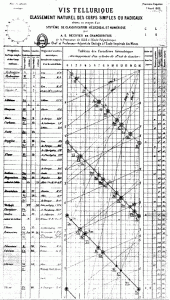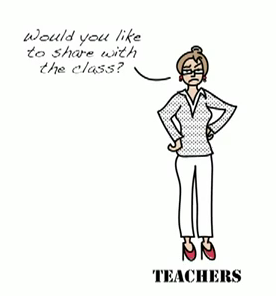I’ve fielded the question about if the world is going to end in 2012. My first-order answer has been to cite the poor level of success that previous predictions of apocalypse have had. NASA has had to address the problem, while C.G.P. Grey has a nice little video explaining the sources of the hysteria (he’s not very happy with the History Channel).
Tag: video
Stop-Motion Recipe
I’ve always been in favor of alternate means of presenting information, especially for recipes.
Stop-Motion Biscuit Cake from Alan Travers on Vimeo.
(via The Dish)
Electron Shells
Brian Cox explains (on the BBC) explains how electron shells are like standing waves, and how that relates to the sizes of atoms, and explains why atoms are mostly space.
Slingshot Physics
Slingshots came up the other day in physics when we were talking about tension in strings when they’re held at an angle. The larger the angle the greater the tension in the string, which is why it’s harder to do pullups on an overhead bar when your hands are spread apart.
The concept of elasticity also came up. It is the elasticity of the rubber band, its ability to return to its original shape, that provides the potential energy when you pull it back.
Smarter Every Day has a video up that glances at the physics of slingshots.
One of the neater things the video shows is one experiment where they were aiming for a pumpkin but missed. The shot went too low, knocking the piece of wood the pumpkin was sitting on, and practically all the momentum of the shot was transferred to the wood: the shot looses all its velocity while the wood takes off. Once its support is gone, the pumpkin just drops vertically — there’s no horizontal motion — making this also a good demonstration of inertia.
The History of the Periodic Table

Spurred by Philip Stewart‘s comment that, “The first ever image of the periodic system was a helix, wound round a cylinder by a Frenchman, Chancourtois, in 1862,” I was looking up de Chancourtois and came across David Black’s Periodic Table Videos. They put things into a useful historical context as they explore how the patterns of periodicity were discovered, in fits and starts, until Mendeleev came up with his version, which is pretty much the basis of the one we know today.
The cylindrical version is pretty neat. I think I’ll suggest it as a possible small project if any of my students is looking for one. You can, however, find another interesting 3d periodic table (the Alexander Arrangement) online.
The Case Against the Electoral College
C.G.P Grey makes the case against the Electoral College in video form. He starts with how the Electoral College Works and continues with a well reasoned polemic against it: he’s big into democracy — one person, one vote.
How the Electoral College Works
The Trouble with the Electoral College
Murmuration: A Flocking of Birds
Amazing footage of an enormous flock of birds in flight by Sophie Windsor Clive.
Murmuration from Sophie Windsor Clive on Vimeo.
Brandon Kelm explains a little of how it works, mostly using terms like “scale-free correlation” and “criticality”, which pretty much sums up that we don’t know a lot about the phenomena.
NetLogo has a nice little Java model showing an attempt at simulating flocking. They give a good description of how there model works.
(via The Dish)
Doodling is Good!
To Doodle: to make spontaneous marks to help yourself think.
–Sunni Brown (2011): Doodlers, unite! (at 3:19) in TED.

Doodling on a notepad is often seen as evidence that a student is not paying attention. Very much to the contrary, argues Sunni Brown in this TED talk:
Studies show that sketching and doodling improve our comprehension — and our creative thinking.
— TEDtalksDirector: Sunni Brown: Doodlers, unite! on YouTube.
She describes doodling as a, “preemptive measure to stop you from loosing focus.” In addition, doodling helps integrate all four modes of learning (visual, auditory, reading/writing, kinesthetic) as well as helps provoke an emotional response, all of which greatly aid retention of information and creative thinking. Finally, doodling is most useful when we’re trying to process a heavy, dense load of information.
Brown has more details in her article in .net, Why the Doodle Matters.
(hat tip: The Dish)